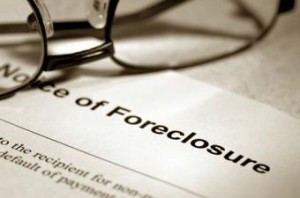 While the consistent decline in foreclosure inventory and completed foreclosures may be indicative of a healing housing market, the side effects of falling foreclosure metrics may be a cause for concern heading into the spring homebuying season.
While the consistent decline in foreclosure inventory and completed foreclosures may be indicative of a healing housing market, the side effects of falling foreclosure metrics may be a cause for concern heading into the spring homebuying season.
Foreclosure inventory, or the number of homes in any state of foreclosure, is back to its pre-crisis levels. In January 2016, approximately 456,000 (1.2 percent) residential homes were in some state of foreclosure, a decline of 21.7 percent from the previous January’s total of 583,000, according to CoreLogic’s National Foreclosure Report for January 2016 released Tuesday. Foreclosure inventory has held steady at 1.2 percent since October 2015 and is at its lowest level for any one month since November 2007.
The decline in distressed properties comes with a price, however, according to the report.
“The improvement in distressed properties continues across the country in every state which is contributing to the lack of stock of available homes and resulting price escalation in many markets,” said Anand Nallathambi, president and CEO of CoreLogic. “So far the trend toward lower delinquency and foreclosures has been immune from shocks from such things as the collapse in oil prices attesting to the durability of the housing recovery.”
The National Association of Realtors’ existing-home sales report for January reported that there were 1.82 million existing homes for sale as of the end of January 2016, which was 2.2 percent lower than January 2015’s total of 1.86 million. NAR’s report also found that the existing-home sales price was $213,800 in January 2016 for all housing types (single-family homes, town homes, condominiums and co-ops) and is up 8.2 percent from the previous January’s median price of $197,600.
 “The spring buying season is right around the corner and current supply levels aren't even close to what's needed to accommodate the subsequent growth in housing demand,” NAR Chief Economist Lawrence Yun said. “Home prices ascending near or above double-digit appreciation aren't healthy—especially considering the fact that household income and wages are barely rising.”
“The spring buying season is right around the corner and current supply levels aren't even close to what's needed to accommodate the subsequent growth in housing demand,” NAR Chief Economist Lawrence Yun said. “Home prices ascending near or above double-digit appreciation aren't healthy—especially considering the fact that household income and wages are barely rising.”
Completed foreclosures, which is a true measure of the number of homes lost to foreclosure, totaled 38,000 during the month of January, which is a decline of 16.2 percent year-over-year. It is still way above the pre-crisis monthly average of 21,000, from 2000 to 2006.Approximately 6.1 million homes have been lost to foreclosure since the financial crisis began in September 2008; since the homeownership rate peaked in 2004, approximately 8.2 million homes have been lost to foreclosure.
“In January, the national foreclosure rate was 1.2 percent, down to one-third the peak from exactly five years earlier in January 2011, a remarkable improvement,” said Dr. Frank Nothaft, chief economist for CoreLogic. “The months' supply of foreclosure fell to 12 months, which is modestly above the nine-month rate seen 10 years earlier and indicates the market's ability to clear the stock of foreclosures is close to normal.”

 DSNews The homepage of the servicing industry
DSNews The homepage of the servicing industry










